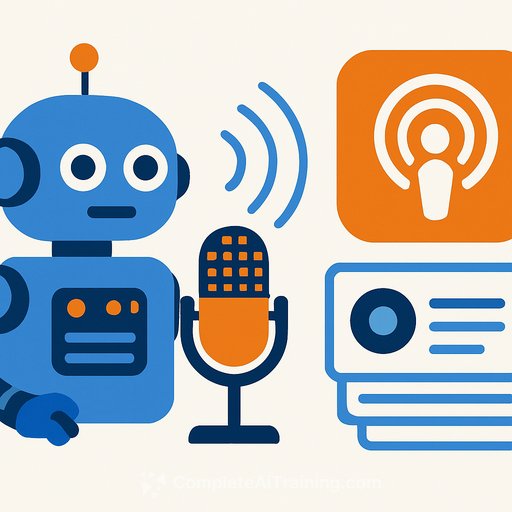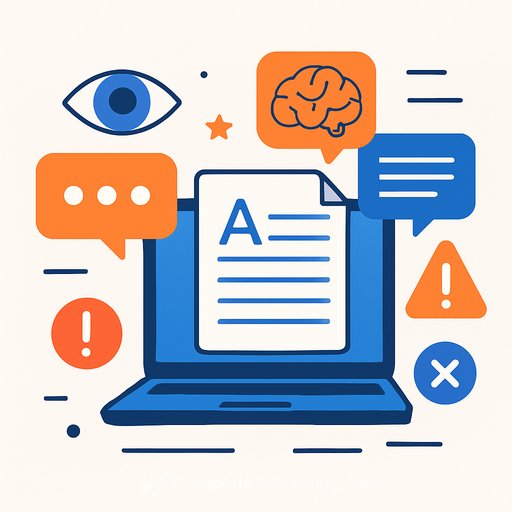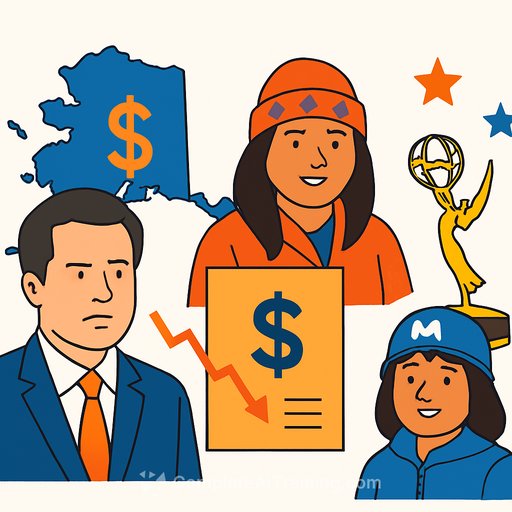AI-Generated Podcasts Are Flooding Feeds. Here's What That Means for Creators, Engineers, and Teams
Podcasts can now be spun up from a document with virtual hosts, realistic banter, and zero studio time. Tools like Google's Audio Overview, ElevenLabs, and Wondercraft let anyone turn PDFs, briefs, or lesson plans into a show in minutes.
This isn't a small tweak to production. It's a volume play that pressures discovery, ads, and what listeners consider "worth their time."
The New Economics of Audio
One early mover, Inception Point AI, ships roughly 3,000 episodes a week with a team of eight. Cost per episode: about one dollar. At that price, ~20 listens can cover costs and push a profit.
Automation also lowers the bar for ads, which used to require thousands of downloads. Hyper-niche shows - like daily pollen counts for a single city - can attract focused sponsors such as antihistamine brands.
The Flood, the Filter, and the Fallout
There's real concern about low-effort "AI slop" crowding feeds. Some companies disclose AI involvement and report minimal listener drop-off if the host voice and content are good enough.
But discovery is finite. As University of Sussex's Martin Spinelli warns, a surge in auto-generated shows makes it harder for independents to get noticed without big promotion budgets. Ad dollars don't scale with infinite supply.
Creator Nate DiMeo points to the math: earn a few cents per episode, produce at massive scale, and suddenly micro-margins matter. Even if listener tastes don't shift, volume alone can distort the market and the craft.
No Clear Labels, More Noise
Apple Podcasts, Spotify, and YouTube currently don't require AI disclosure. That leaves listeners guessing and creators competing in a mixed catalog where some shows are human-led and others fully synthetic.
Some argue the line between AI and non-AI is already blurred and that synthetic-voice podcasts may form their own genre over time. Others insist listeners want to connect with a human mind - and without that, the reason to listen fades.
If you publish, prepare for both realities: some audiences will accept synthetic shows; others will seek human voice, context, and taste.
Action Plan for Writers, Developers, and Operators
- Decide your lane: Human-first, AI-assisted, or fully synthetic. Pick one per show to set expectations.
- Use-cases that work now: Briefings from documents, news summaries, explainers, localized updates (weather, pollen, transit), FAQs for products, internal comms.
- Stack basics: Script generator + voice engine + music/FX + feed host + analytics + ad/affiliate layer.
- Guardrails: Style guide, banned claims list, fact-check passes, prompt templates, and a human QA sweep for anything client-facing.
- Monetization math: Keep cost per episode near $1-$3. Test CPM ads, CPA affiliates, and sponsor reads. Niche beats broad if intent is high.
- Discovery: Tight titles, clear benefits in the first 10 seconds, episodic naming that surfaces search keywords, consistent cadence, and cross-posting to short video.
- Disclosure: Even if platforms don't require it, add a simple AI note in show notes or intro. It builds trust and preempts pushback.
- Legal and safety: Secure rights for voices, music, and documents. Avoid impersonation. Keep a log of sources and approvals.
A 30-Day Test You Can Run
- Week 1: Pick one niche problem and build a 3-episode pilot using a document-to-podcast workflow.
- Week 2: Ship on two platforms. Track completion rate, 24-hour downloads, and saves. Iterate hooks and intros.
- Week 3: Add one monetization test (affiliate or sponsor read). Try a second voice profile and tighter scripts.
- Week 4: Scale to daily micro-episodes or a second micro-niche. Kill what stalls below break-even for three drops in a row.
Where Things Could Break
- Policy shifts: Platforms may add AI labels or stricter rules on synthetic voices. Build with flexibility.
- Ad fatigue: If buyers see shrinking attention or brand risk, CPMs drop. Keep quality and retention high.
- Listener churn: Low-effort clones get muted. Distinct editorial taste and useful, specific information win.
- Search/discovery: Expect algorithm changes to throttle spammy volume. Focus on depth per episode, not just count.
Practical Resources
- Apple Podcasts for Creators
- Spotify for Podcasters
- Automation guides and tools (Complete AI Training)
Bottom Line
AI makes podcasts cheap, fast, and abundant. That opens doors for niche utility and tight margins at scale - and it squeezes discovery and ad share for everyone else.
If you create: be clear on your lane, build guardrails, and measure with discipline. The shows that survive will combine useful specificity, consistent voice, and a system that pays for itself.
Your membership also unlocks:










